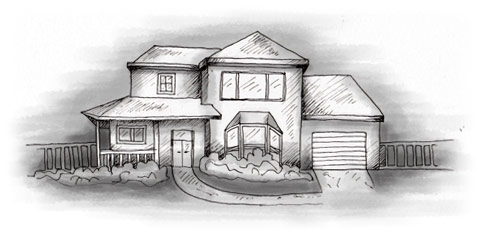Before committing yourself to a purchase, ask for a rapport de contrôle, drawn up by an official inspector, for the sewerage system; if it hasn’t been inspected (systematic inspections were initiated only in 2005 and it may be several years before all installations have been checked), have it checked by an expert. If there’s no septic tank, ask a specialist to assess your requirements and the likely cost of installing a system. Contact your departmental or regional Direction de l’Environnement (ask at your town hall for the telephone number) and obtain a list of approved specialists (bureau d’études) authorised to carry out an inspection or a feasibility study (étude de filière); the cost of either is between around €300 and €350.
If you’re contemplating buying a house with a septic tank, bear in mind that there are currently extensive projects to connect village properties to mains drainage. These generally affect homes in the centre of villages, but in any case you should ask at the town hall whether a property is due to be connected to the mains and whether it will be possible to refuse mains connection (provided you have a septic tank system that meets current standards). Although mains connection might sound like good news if the idea of having a septic tank in your garden is less than appealing, there’s a slight inconvénient to be taken into consideration – namely cost: there will be a charge for connection to the mains drainage system, which must be paid within two years of connection, plus a hefty annual ‘service’ charge added to your water bill.
Another bit of bad news is that properties that aren’t considered worthy of connection to the main drainage system will have their tanks inspected in the coming months or years (if they haven’t been inspected already) and thereafter every four years or so to make sure they meet the latest standards, which in many cases will be more exacting than those that applied when the tank was installed. In other words, you could be faced with a hefty bill for a new system.
Cesspits illegal

Note in particular that cesspits are now illegal. You will be given notice of an impending inspection, which is compulsory, and the inspector will draw up a report, indicating any shortcomings of your system. Even if they don’t need replacing, old septic tanks may be in need of drainage, repair, or new pipes, filters or filtration systems. Modern regulations demand, for example, considerably lengthened overflow pipes, which may not be possible within a property’s boundaries.
Individual sewage systems are subject to strict regulations, which are currently in the process of being updated to meet EU standards, and inspections will become routine.
There are essentially two types of septic tank: older tanks (fosse traditionnelle) take bathroom waste only, which is allowed to soak into the ground through gravel, while newer tanks (fosse à toutes eaux) take all household waste water and treat it before it’s discharged through a system of filters. Note that some older fosses toutes eaux have an aerator (brouilleur or batteur) to help break down the solid matter and allow it to settle while clear water overflows into an underground drainage system. These are now more or less obsolete, so it may be difficult to obtain spare parts if required.
If you need to install a septic tank, you should check the following:
- That there’s enough available land, bearing in mind that the drains for a septic tank must be installed a certain minimum distance from the boundaries of a property (e.g. 3 to 5m), and must cover a certain area depending on the size of the tank (generally at least 85m2).
- Whether there are rivers, canals or other water courses (including underground springs and waterways) that might affect the siting of the tank and soak-away and the type of soak-away – for example, a septic tank mustn’t be less than 35m from a well.
- Whether the ground is marshy or rocky, in which case installation could be difficult and/or expensive.
- Whether the land slopes upwards away from the house, which may mean that waste water must be pumped up to the soak-away – another additional expense.
- Whether there’s access to the site for a lorry (delivering the tank and subsequently emptying it) and a digger to install the soak-away.
The cost of installation, which can be between €2,000 and €5,000 depending on the size of tank and the type of installation, must be taken into account in your budget. Make sure that a tank is large enough for the property in question, e.g. 2,500 litres for two bedrooms and up to 4,000 litres for five bedrooms. It’s essential to check these things before purchasing a property.
There are alternatives to septic tanks, e.g. reed beds, but these must be properly designed and constructed to meet the required standards. Bear in mind that the installation of ‘alternative’ sewerage systems may make a property difficult to sell.
This article is an extract from Buying a home in France. Click here to get a copy now.

